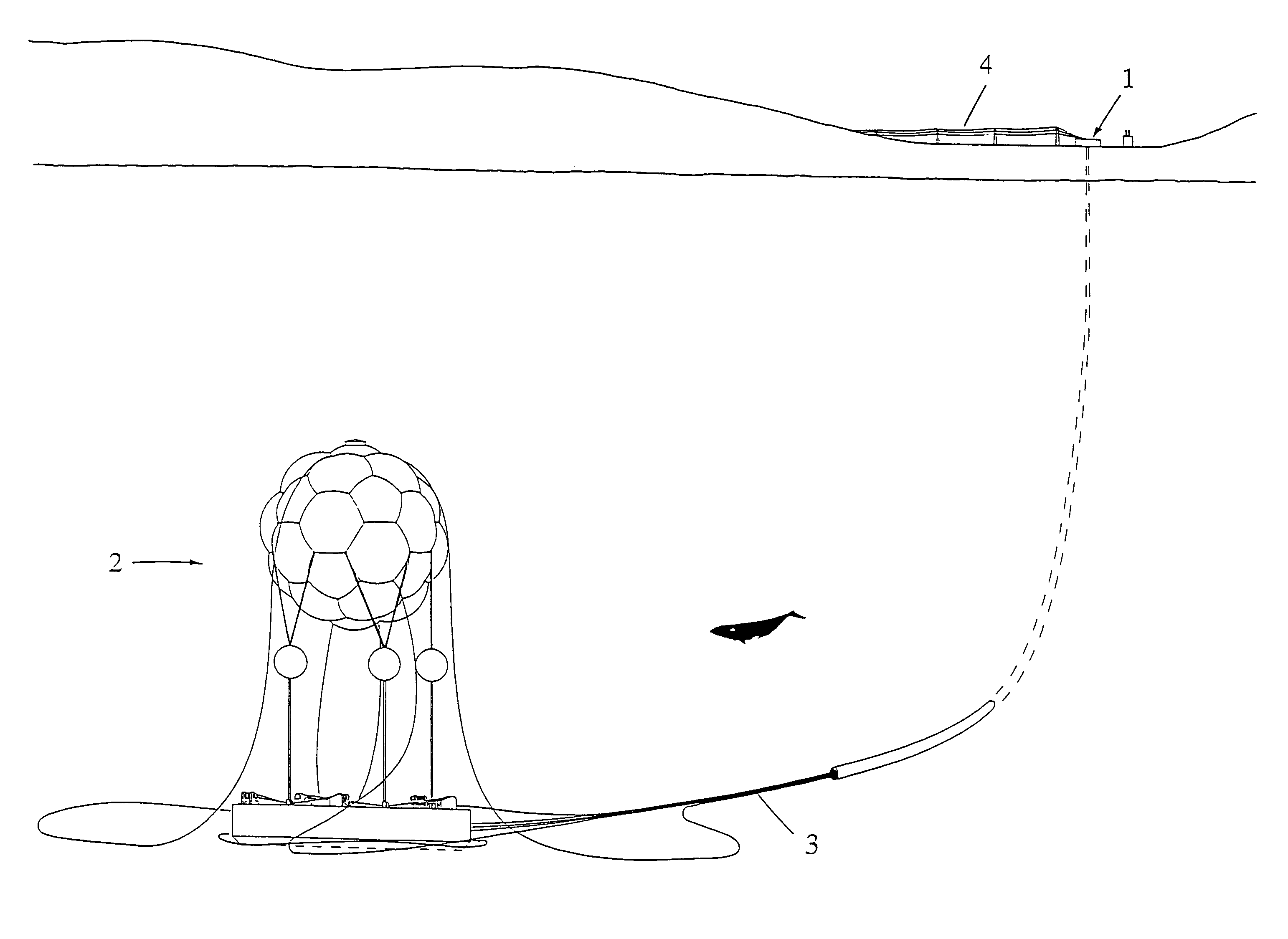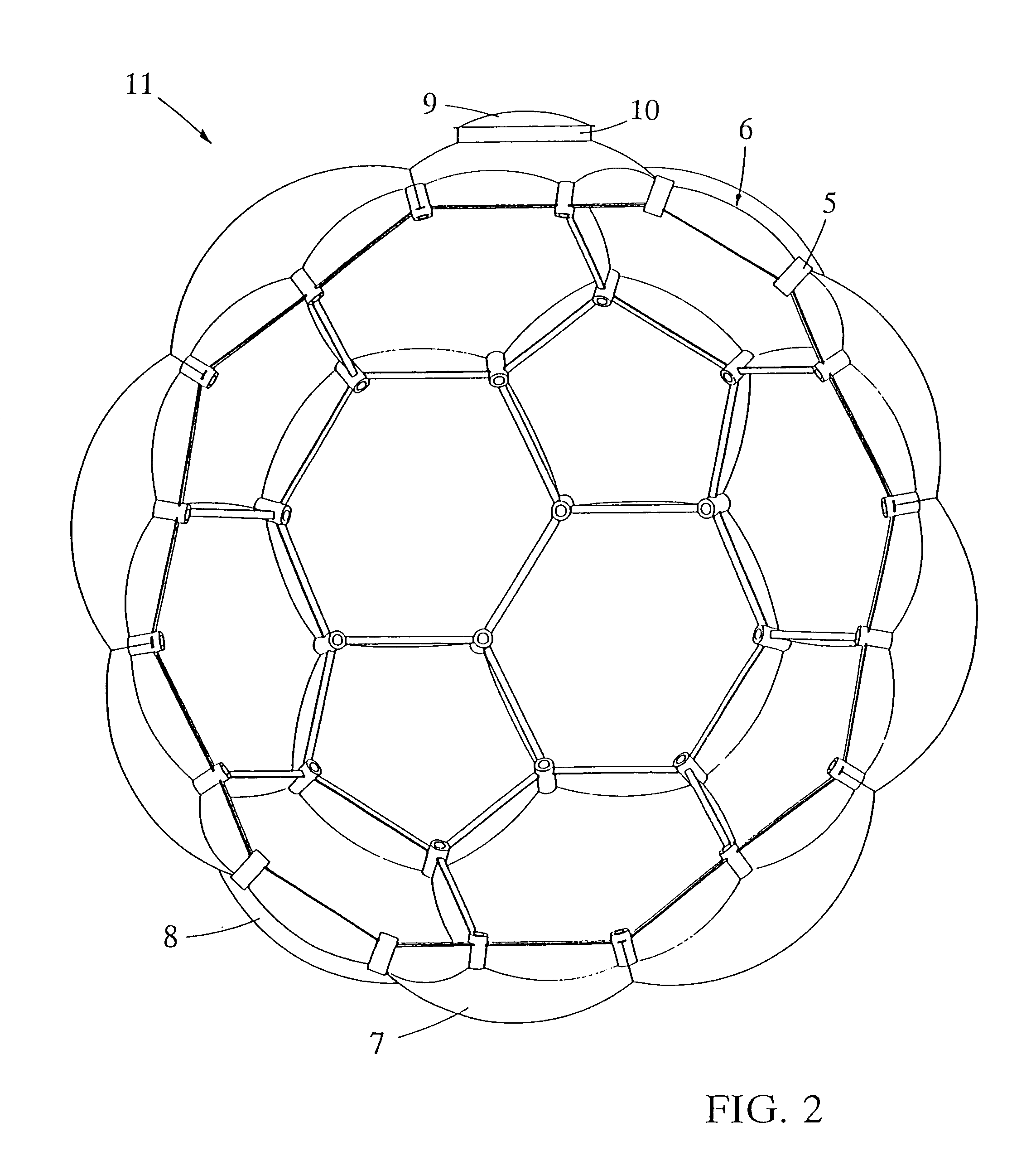Seafloor power station
a power station and seafloor technology, applied in the direction of machines/engines, nuclear elements, greenhouse gas reduction, etc., can solve the problems of large opposition, catastrophic peak temperatures in the fuel rods under such conditions, and substantial dredging for the construction of this cofferdam, so as to reduce the oxidation of components and eliminate the effect of convection cooling
- Summary
- Abstract
- Description
- Claims
- Application Information
AI Technical Summary
Benefits of technology
Problems solved by technology
Method used
Image
Examples
Embodiment Construction
[0029]Referring now to the drawings, FIG. 1 is a single point perspective of a seafloor power station showing a manned shore facility (1) with control, hydraulic pump and other support rooms in a building with transformers, vacuum tanks and standby generators adjacent. One Unit (2) is shown through the water on the seafloor. Electric lines and hoses (3) to the facility deliver power from the Units' generators, operate the mats' winches from the pumproom, and maintain a vacuum in the hull; the vacuum hoses also serve as conduits for fibre optic and other control circuits.
[0030]Lines (4) from the transformers send power to a high voltage grid. If the Units are farther offshore, economics may indicate locating the facility on an island or platform, from which only the high voltage lines would go ashore.
[0031]FIGS. 2-4 show the steel hull (11) structure in half section and detail, with sixty radially oriented tubes (5) with ninety standard beams (6) twelve pentagon based domes (7) and t...
PUM
 Login to View More
Login to View More Abstract
Description
Claims
Application Information
 Login to View More
Login to View More - R&D
- Intellectual Property
- Life Sciences
- Materials
- Tech Scout
- Unparalleled Data Quality
- Higher Quality Content
- 60% Fewer Hallucinations
Browse by: Latest US Patents, China's latest patents, Technical Efficacy Thesaurus, Application Domain, Technology Topic, Popular Technical Reports.
© 2025 PatSnap. All rights reserved.Legal|Privacy policy|Modern Slavery Act Transparency Statement|Sitemap|About US| Contact US: help@patsnap.com



